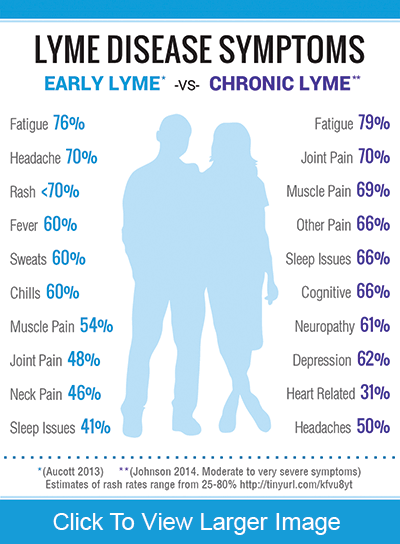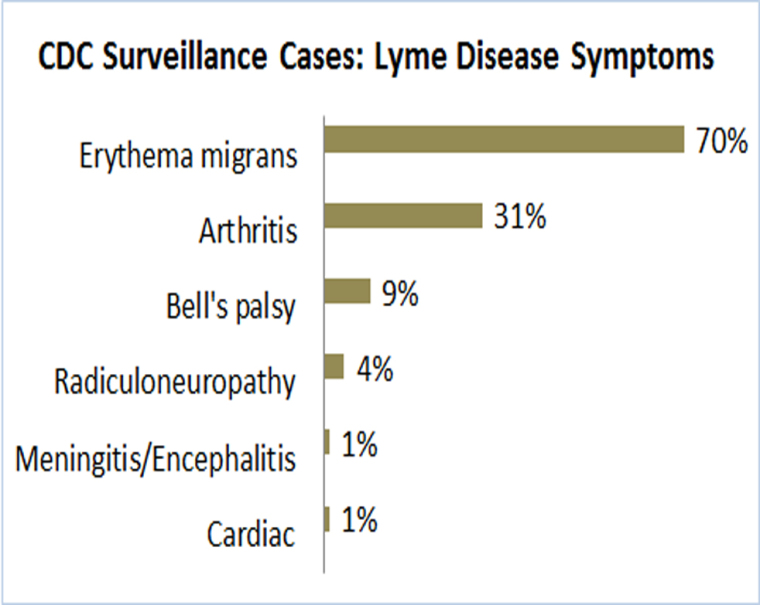
For example, a CDC report on Lyme carditis, which can be fatal, found that only 42% of cases had a rash.
Tweet Lyme Facts
Lyme Disease Symptoms Checklist
LymeDisease.org has developed a Lyme disease symptom checklist to help you document your exposure to Lyme disease and common symptoms for your healthcare provider. You will receive a report that you can print out and take with you to your next doctor’s appointment.
Chronic Lyme Disease Symptoms
If Lyme disease is not diagnosed and treated early, it may become late-stage or chronic. This may also occur when early treatment is inadequate. While some symptoms of chronic or late stage Lyme disease are similar to those of early Lyme, as the graphic below shows, there are important differences.
Lyme disease may spread to any part of the body and affect any body system. Typically, it affects more than one body system. In our survey, which drew over 5,000 responses, patients with chronic Lyme disease reported an average of three severe or very severe symptoms, with 74% reporting at least one symptom as severe or very severe.
An extensive list of symptoms of chronic Lyme disease was developed by Dr. Joseph Burrascano, a pioneer in treating chronic Lyme disease.
Lyme Disease Symptoms Also Occur In Other Diseases
Many Lyme symptoms, such as fatigue, cognitive impairment, joint pain, poor sleep, mood problems, muscle pain, and neurological presentations also occur in other diseases. Hence, the symptoms of Lyme disease significantly overlap those of chronic fatigue, fibromyalgia, rheumatoid arthritis, multiple sclerosis, Parkinson’s disease, ALS, depression and Alzheimer’s disease. Many Lyme patients report being misdiagnosed with a different condition before being properly diagnosed with Lyme disease.
Lyme Disease and the CDC
In order for the Centers for Disease Control (CDC) to recognize a Lyme case for surveillance purposes, there must be “objective” findings, such as positive blood tests, Bell’s palsy or joint swelling (even though Lyme blood tests are unreliable and the CDC’s accepted “objective” indicators are not common). The chart below reflects the CDC-reviewed surveillance case manifestations from 2001 to 2010.
This situation contributes to what many experts view as severe undercounting of Lyme disease by the CDC.



















